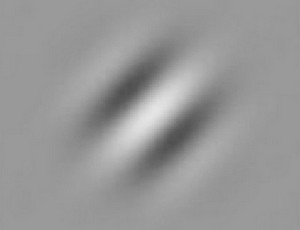
Why is it that we sometimes notice there is a cat sitting on a windowsill, while other times we fail to see it, even though it was there? The research of JU psychologists explains how the unconscious becomes conscious.
A conscious experience is one which happens when we begin to notice a specific element of reality (e.g. we see a cat or hear a doorbell) or a change in our body (e.g. a headache). However, consciousness is a very vague and ambiguous term, one with strong philosophical connotations. Psychology, though, is empirical – it attempts to gain understanding of the human mind through objective research.
Can consciousness – something so ambiguous and elusive – be examined in a scientific way? The answer is yes, but only if we study it at an elementary level, piece by piece, discovering mechanisms that lead to a conscious experience. Anna Anzulewicz, PhD student from the Department of Experimental Psychology of the JU Institute of Psychology, conducts this kind of research. She analyses a phenomenon called a conscious visual experience – in other words, transitioning into the state in which our brain realises that we see something. "I study the factors which is some cases make us aware of a particular element of reality instantly, while in others lead to a slower, gradual process," the researcher said. The project employs simple computer games, in which volunteers observe images briefly appearing on a screen, usually letters, numbers or shapes. After that, they use a special scale to assess how aware of the objects they were.
Information processing
 One of the factors which can cause gradual or immediate transition from unconscious to conscious seeing is the depth at which the information is processed in the brain. Shallow processing occurs, for instance, when we try to learn a poem by heart, while deep processing takes place when we try to analyse and thoroughly understand the processed information. Another factor is a person's involvement in a situation (i.e. how concentrated a person is on a specific task or object). According to Anna Anzulewicz, the depth of information processing as well as the attention we devote to something can increase the speed of transitioning between unconscious and conscious seeing.
One of the factors which can cause gradual or immediate transition from unconscious to conscious seeing is the depth at which the information is processed in the brain. Shallow processing occurs, for instance, when we try to learn a poem by heart, while deep processing takes place when we try to analyse and thoroughly understand the processed information. Another factor is a person's involvement in a situation (i.e. how concentrated a person is on a specific task or object). According to Anna Anzulewicz, the depth of information processing as well as the attention we devote to something can increase the speed of transitioning between unconscious and conscious seeing.
The issues analysed within the framework of the project are key in studying consciousness. Discovering what factors influence the dynamics of unconscious and conscious information processing will allow to explain any inconsistencies in previous research. It may also make it possible for opposing theories to integrate.
In time, a better understanding of the transition from unconscious to conscious might be put to practical use: for example, what influences the level of driver's alertness on the roads. This knowledge is crucial to increasing the safety of traffic.
The project is part of a comprehensive research on human consciousness realised at C-Lab.
Original text: www.nauka.uj.edu.pl
Picture: an example image used in consciousness research.





